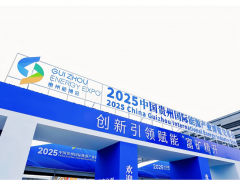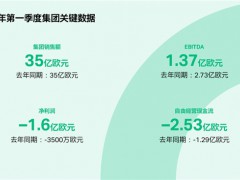據美國鉆井網站2023年5月29日報道,國際能源署(IEA)日前發表的最新一期的《世界能源投資報告》表明,根據對大中型石油、天然氣和煤炭公司已公布支出計劃的分析,今年全球化石燃料供應投資將增加6%以上,達到大約9500億美元。
對于上游石油和天然氣領域,IEA預計今年的支出將增加7%,超過5000億美元,與2019年的水平相當。然而,其中大約一半的增加可能會被成本上漲所吸收。
IEA稱,許多大型石油和天然氣公司在去年實現了歷史最高利潤,但大部分收入都被用于股息分配、股票回購和償還債務——只有大型中東國家石油公司今年的支出高于去年。報告稱,與疫情前的水平相比,中東國家石油公司是目前該行業支出增加的唯一子集。
IEA報告稱,去年石油和天然氣行業在低排放替代品(包括碳捕獲技術)上的資本支出不到其上游支出的5%,與2021年的比例相當。
清潔能源投資增加
IEA表示,地緣政治沖突帶來的化石燃料市場波動,加速了清潔能源技術的發展勢頭。
盡管地緣政治沖突導致了對石油和天然氣供應的短期爭奪,但該報告指出,去年清潔能源投資的預計年增長率將達到24%,超過2021年的15%。疫情造成的經濟衰退的復蘇也大大促進了這些投資。然而,報告稱,清潔能源支出的增加仍局限于以歐盟、美國和日本為首的幾個國家和地區。
在今年預計的2.8萬億美元能源投資中,超過1.7萬億美元將投入清潔能源,其余將投入化石燃料和電力。在這大約1萬億美元的資金中,預計約85%將投資于石油和天然氣,15%投資于煤炭。
報告中提到的清潔能源投資包括可再生能源、核能、電網、儲能、低排放燃料、提高效率以及最終使用的可再生能源和電氣化。
李峻 編譯自 美國鉆井網站
原文如下:
Fossil Fuel Supply Spending to Rise Six Percent in 2023: IEA
based on an analysis of the announced spending plans of large- and medium-sized oil, gas and coal companies, fossil fuel supply investments are set to rise by more than six percent to around $950 billion for 2023, according to the latest World Energy Investment Report by the International Energy Agency (IEA).
For upstream oil and gas, the agency projects spending to increase by seven percent for the year to over $500 billion, matching 2019 levels. However, around half of the increase will likely be absorbed by cost inflation, it said.
Many large oil and gas companies reported record profits in 2022, but most of the revenue has gone into dividends, share buybacks and debt repayment—only large Middle Eastern national oil companies are spending more this year compared to last year, the IEA said. They are the only subset of the industry spending more currently compared to pre-pandemic levels, according to the report.
The oil and gas industry’s capital spending on low-emissions alternatives, including carbon capture technologies, was less than five percent of its upstream spending in 2022, which is equivalent to last year’s percentage, the IEA reported.
Rise in Clean Energy Investment
The volatility in fossil fuel markets brought about by the war has “accelerated momentum” in clean energy technologies, the IEA said.
Although the war led to a short-term scramble for oil and gas supplies, the report stated that the projected growth in annual clean energy investment for 2023 would be 24 percent, surpassing the 15 percent increase in 2021. The recovery from the economic slump caused by the Covid-19 pandemic has also provided a significant boost to these investments. However, the increase in clean energy spending is still limited to several countries and regions, led by the European Union, the USA and Japan, according to the report.
Of the projected $2.8 trillion investment in energy for the year, more than $1.7 trillion would be put into clean energy, while the rest would go to fossil fuel and power. Of this roughly $1 trillion amount, around 85 percent is expected to be invested in oil and gas, and 15 percent in coal.
Clean energy investments mentioned in the report include renewable power, nuclear, grids, storage, low-emission fuels, efficiency improvements and end-use renewables and electrification.
免責聲明:本網轉載自其它媒體的文章及圖片,目的在于弘揚石化精神,傳遞更多石化信息,宣傳國家石化產業政策,展示國家石化產業形象,參與國際石化產業輿論競爭,提高國際石化產業話語權,并不代表本網贊同其觀點和對其真實性負責,在此我們謹向原作者和原媒體致以崇高敬意。如果您認為本站文章及圖片侵犯了您的版權,請與我們聯系,我們將第一時間刪除。







